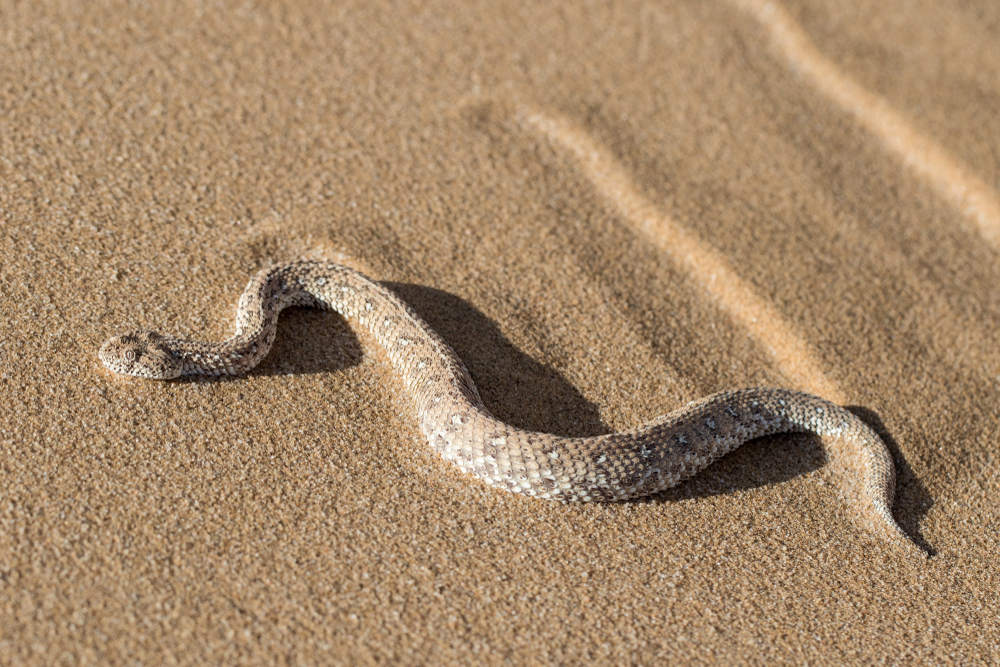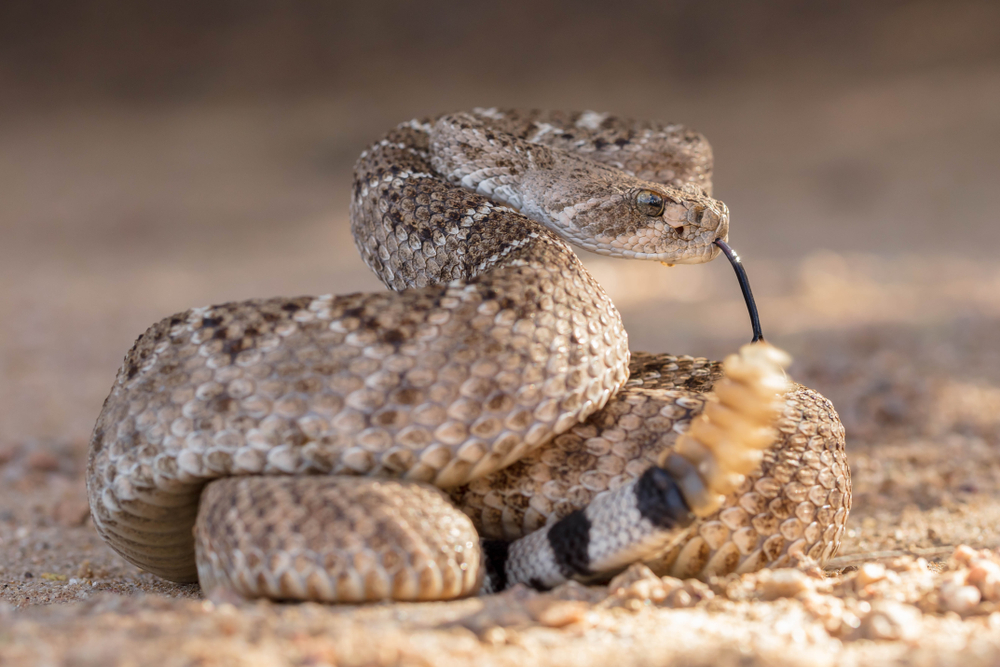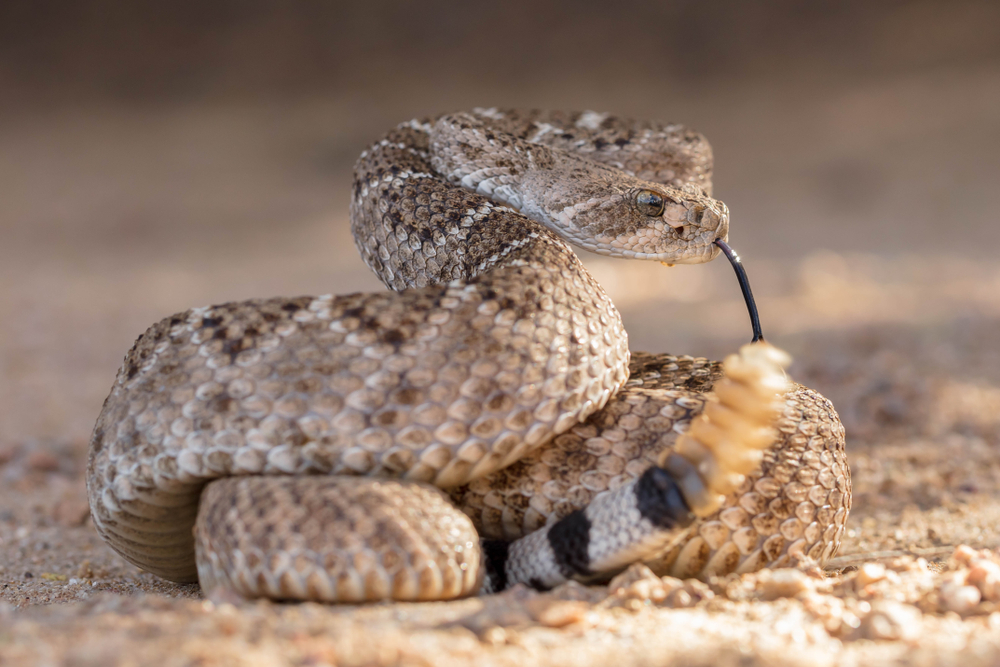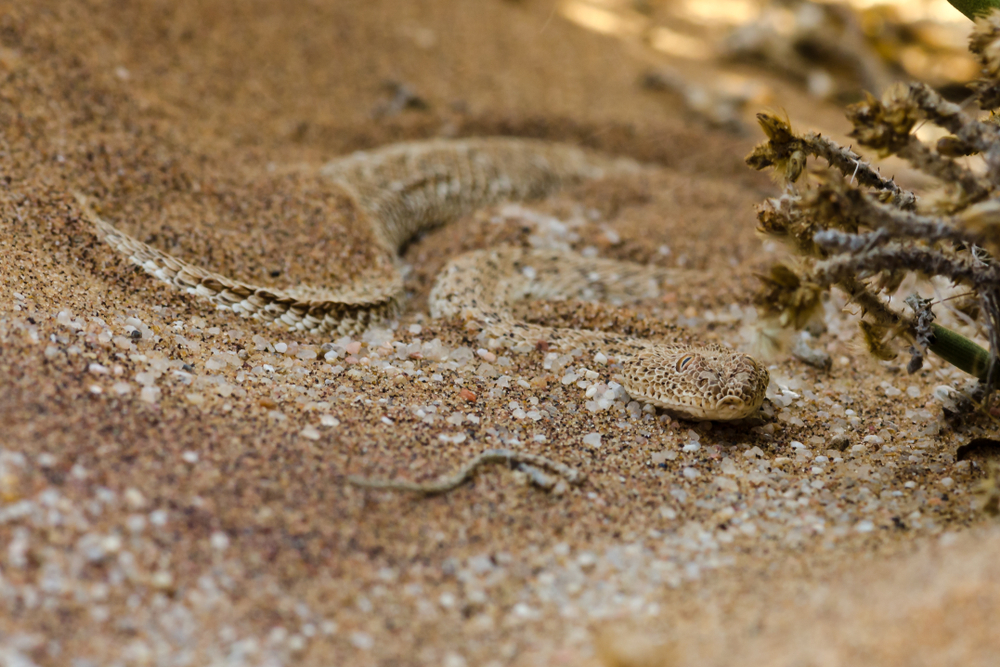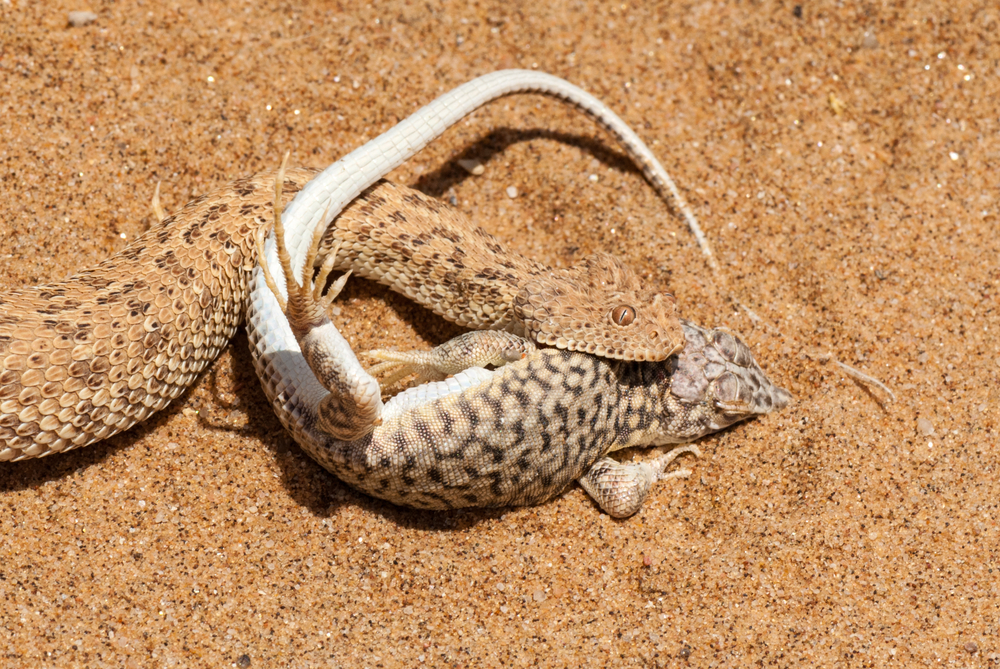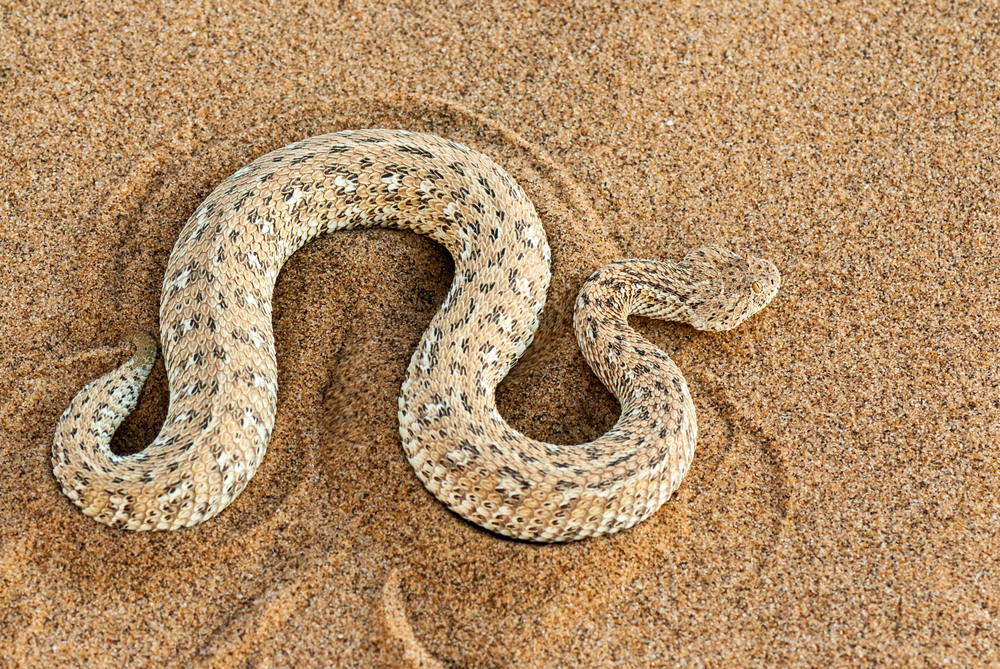Sidewinders (Crotalus cerastes) differ from other rattlesnake species in several distinctive ways:
1. Locomotion Method:
- The most notable difference is their unique mode of locomotion. Sidewinders are named for their sidewinding movement, a specialized form of locomotion that allows them to move efficiently across hot desert sands. This contrasts with the typical slithering motion of most other rattlesnakes.
2. Physical Appearance:
- Sidewinders are generally smaller than many other rattlesnake species. They also have a distinctive head shape with elevated eyes and, in some subspecies, supraocular scales or “horns” above their eyes, which are not present in most other rattlesnakes.
3. Habitat:
- Sidewinders are specifically adapted to desert environments, particularly sandy areas. While other rattlesnake species also inhabit arid and desert regions, Sidewinders are uniquely equipped for life in sandy deserts.
4. Hunting and Diet:
- Their ambush predatory tactics are similar to other rattlesnakes, but their prey choice is closely tied to their desert habitat, primarily feeding on small desert rodents and lizards.
5. Venom:
- While all rattlesnakes have venomous bites, the potency and composition of venom can vary between species. Sidewinders, like other rattlesnakes, have hemotoxic venom, but the effects and potency are specific to their species.
6. Reproductive Habits:
- Sidewinders, being ovoviviparous, give birth to live young, a trait common to rattlesnakes but their reproductive timing and frequency can vary due to their specific desert habitat.
7. Adaptations for Thermoregulation:
- Adapted to the extreme temperatures of the desert, Sidewinders have developed behaviors and physical traits (like nocturnal activity and light-colored scales) to cope with the heat, which may differ from other rattlesnake species found in less extreme environments.
These unique adaptations make Sidewinders a fascinating example of evolutionary specialization, allowing them to thrive in one of the most challenging habitats for reptiles.



































































